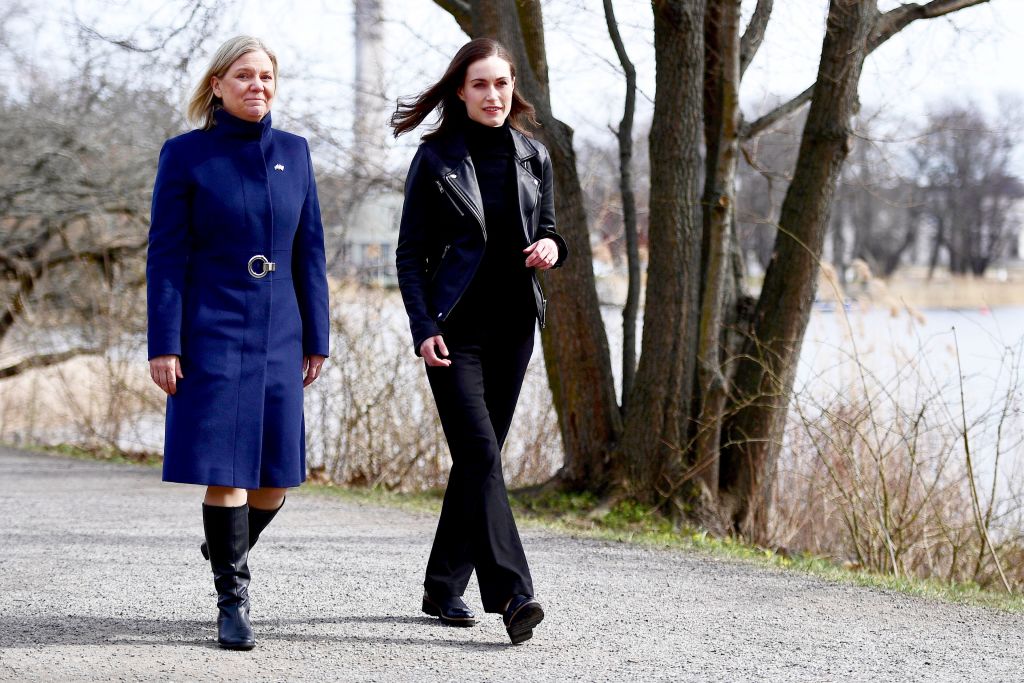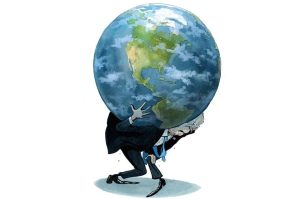The last time NATO inducted a new member was in 2019. The alliance agreed to accept North Macedonia’s request for membership.
The small Balkan country was an odd choice to become the alliance’s thirtieth member state. At roughly 7,500 troops, North Macedonia’s military was smaller than the Los Angeles Police Department. Its entire population was smaller than Brooklyn’s and its economy was one fifth the size of North Dakota’s.
Three years later, NATO is set to become even bigger. Finland and Sweden, two Nordic nations with a decades-long policy of military neutrality between the West and Russia, will very likely submit their own membership bids as early as next month. Before Russia’s invasion of Ukraine, neither power was especially interested in becoming full-fledged members. But the war has prompted a dramatic shift in Swedish and Finnish public opinion on this question.
In Finland, more than two thirds now support NATO membership. Sweden’s governing Social Democratic Party, skeptical of NATO membership in the past, is now actively deliberating whether such a move is needed in light of the current geopolitical environment. In Europe, February 24, the date of Russia’s invasion, is increasingly seen as the beginning of a new era, a date as monumental as the November 9, 1989 fall of the Berlin Wall and the December 26, 1991 collapse of the Soviet Union.
For Russian President Vladimir Putin, Finland’s and Sweden’s moves toward NATO membership are yet another unintended consequence of what has turned out to be a bloody morass in Ukraine. Those costs include an economy hemorrhaging foreign capital, a brain-drain of young, educated talent, Russia’s long-time gas buyers searching for alternative energy sources and a recession the likes of which the Kremlin hasn’t seen since the early days of Boris Yeltsin’s tenure. Practically speaking, Putin’s gamble in Ukraine has been a strategic dumpster fire.
From the vantage point of Sweden and Finland, joining the most powerful military alliance on the planet is an understandable reaction to Europe’s deadliest war in nearly 80 years. The destruction of multiple Ukrainian cities at the hands of Russian air and artillery strikes has laid waste to the assumption that Europe was somehow immune to this type of savagery. Finnish President Sauli Niinistö may still talk to Putin from time to time, but there is no longer sympathy for the Russian position. Niinistö himself talks of Putin as a lost cause, a man cut off from good information, surrounded by cowered yes-men and oblivious to the Russian military’s disastrous performance in the field.
But just as Sweden and Finland are entitled to exercise their right to petition NATO for membership, the alliance is entitled to review the application with a cool head.
On the one hand, Finland and Sweden would appear to be ideal applicants. Both nations are essentially de facto members of the alliance already, having spent years engaging with NATO in joint exercises and supporting NATO missions in the Balkans, Afghanistan and Iraq. Sweden and Finland are two of six “Enhanced Opportunity Partners,” which means both participate in regular security consultations with the alliance. The Swedish and Finnish militaries are well up to NATO standards and are interoperable with NATO equipment, concepts and doctrine. And to put the icing on the cake, Finland already meets NATO’s 2 percent of GDP benchmark on defense spending (the Swedes haven’t met the 2 percent standard but plan to increase their defense budget by 230 percent over the next five years).
Accepting the two Nordic countries into the alliance, however, isn’t cost-free. Granting Finland membership would double NATO’s border with Russia overnight. NATO member states would be responsible for defending an 800-mile frontier with a country, Russia, that very likely chose to invade Ukraine in part to block the alliance from expanding to another neighbor. Russia has already threatened to take unspecified action if Sweden’s and Finland’s membership applications are approved.
This could include more deployments along the Russian-Finnish border (although such deployments won’t occur until after the war in Ukraine is over or is at least stabilized), cyberattacks on critical infrastructure and more frequent violations of Swedish and Finnish airspace. Russia could also station nuclear warheads in Kaliningrad, a Russian exclave just across the Baltic Sea from Sweden, as former Russian president Dmitriy Medvedev suggested this month. The Baltic Sea itself could become far more congested, with Russian, Swedish, Finnish and NATO vessels engaging in more altercations.
There is also the question of whether Sweden or Finland actually need NATO’s protection. The two countries are sophisticated military powers with formidable, highly trained militaries, and they possess the most advanced Western-made defense platforms. A hypothetical Russian invasion or attack on Finnish or Swedish territory, especially today, is hard to imagine. The war in Ukraine is demonstrating to the entire world just how ineffective the Russian military machine is; the Pentagon estimates that Russia has lost about a quarter of its military capacity in only two months of fighting.
The loss of Russian trucks, infantry fighting vehicles and tanks to Ukrainian forces is far higher than most military experts would have estimated at this stage of the campaign. The Russian army couldn’t even capture Chernihiv, a city of 300,000 people, and may barely have the capability to maintain its offensive in eastern Ukraine. To think Moscow could open a whole new front is to treat the worst-case scenario as the most realistic.
Extending NATO to newer terrain is serious business. Allowing new members into the alliance comes with weighty defense commitments. Bestowing such a status on Sweden and Finland effectively means the United States and the rest of the alliance would sign up to go to war against a nuclear-armed Russia if necessary. This reason alone should be enough to ask hard questions instead of giving either country the benefit of the doubt.


















